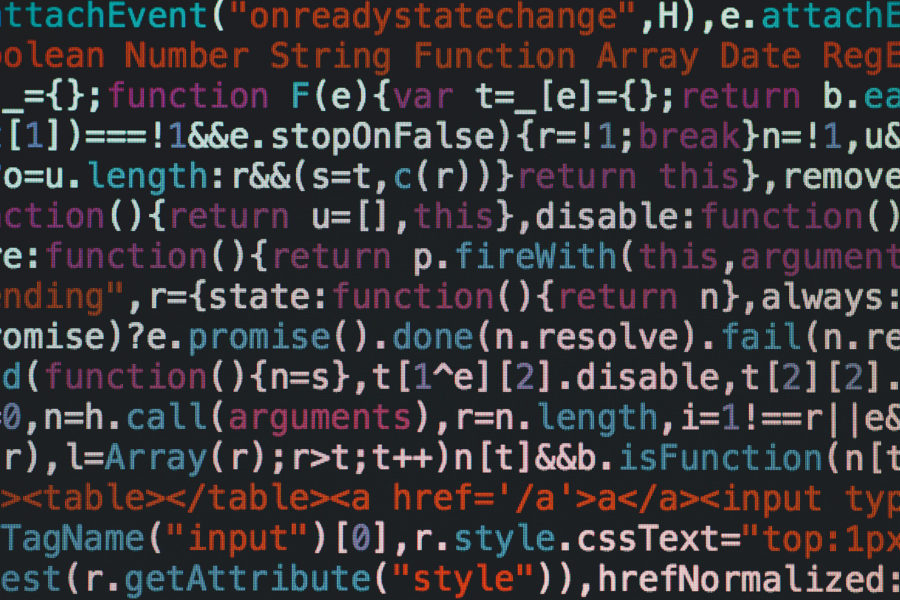 Fun fact about me: before I got into making custom software, I owned and ran a creative agency for 22 years. So I know what it’s like to manage the creative process.
Fun fact about me: before I got into making custom software, I owned and ran a creative agency for 22 years. So I know what it’s like to manage the creative process.
Most days are a jumble of meetings, hastily written proposals, billing (gotta get paid!), version control nightmares, and the occasional misspelled headline. Not to mention near-constant interruptions from your well-meaning team who, depending on where they are, knock on your real or digital door with an endless list of ideas to kick around, designs to review, and questions about PTO. There’s so much to think about.
If you’re like I was, you’re struggling to remember why you got into this business in the first place.
But what if you could transform your business into a thing of beauty? What if it ran so smoothy it rivaled your latest [insert beautiful thing you made]?
And most importantly, what does any of this have to do with software?
What do we mean by “custom software”?
People have a tendency to glaze over when I use the word software, so stick with me here.
At its best, software is a tool. It’s designed to make things easier, kind of like Google is easier than the card catalog at your middle school library. (Remember those?)
For certain activities, there’s a strict set of rules about how you have to do things. Take accounting, for example. Accounting has a list of rules called Generally Accepted Accounting Principles, or GAAP.
There’s nothing simple about GAAP. In fact, it’s immensely complicated. That means accounting software has to be immensely complicated to keep up.
On the other hand, GAAP applies to everyone. The basic rules are the same, whether you have 6 employees or 600. The software is only a tool that lets you interact with established rules in a way that (hopefully) makes sense to you.
But you are a creative human. You don’t deal in Generally Accepted anything. What are the rules for making art? How do you imagine? What sparks an idea? We creatives can’t explain how we do what we do, because most of the time, we don’t really know. It just works. And over the years we’ve built our own special frameworks for getting to the good stuff.
When I talk about custom software, I’m talking about honoring those frameworks. About creating a supporting structure that helps you take care of all the details you have to attend to so you can get to do the fun part, which is making awesome, inspiring, jaw-droppingly beautiful things.
Not all brains are the same
This conversation is not going to devolve into left-brain/right-brain. It’s much more nuanced than that.
You have strengths, as does every member of your team. Hopefully your strengths compliment each other most of the time. In some areas, they probably don’t. And occasionally, this creates drama, because Bob and Carol can’t agree on the right way to do the thing, whatever it is.
The stakes are even higher when we’re talking about creativity. No one really knows where creativity comes from. You just know it when you see it. And you probably have some sort of system for coaxing it out of yourself.
Custom software (and a great development team) can help you codify and operate within that system. Not some of the time, not when you remember, but all the time.
Making work easier with affordable custom software
Whether you’re a graphic designer, illustrator, copywriter, or advertising guru, you will enjoy these key benefits when you adopt custom software.
1. Run your business the way YOU want to.
It seems like a new CRM or project management platform explodes onto the scene every week. A lot of them have the same features and, for the most part, they work fine. But only if your business happens to work the way the software expects it to.
That fact is, most project management platforms creative agencies use were designed by technical people. Logical, linear, analytical thinkers. And while we desperately need these kinds of people in our world, they don’t necessarily have all the answers when it come to your messy, intuitive, lightning-struck-in-the-shower creative process.
Our software development process includes a strengths assessment for your entire team. That’s the only way to know the software we’re designing will meet everyone’s needs.
BONUS: You’ll learn how to lean on your strengths individually and as a team to deliver better work, meet deadlines and get paid faster!
2. Win more work.
One of the hardest things about running an agency is winning new work. Let’s face it, writing proposals is NOT how we want to spend our time. So why not make it as painless as possible?
Custom software can simplify the proposal writing process while making your proposals better. How? By keeping all your qualifications in one place. What if you could drag in and reorder existing content with just a click? You’ll never have to dig through old proposals again while muttering, “I know I’ve answered this question before…somewhere.”
Plus, with built-for-you calendaring and task management, you’ll leverage your unique strengths to get started sooner. No late nights and third pots of coffee required.
3. Get paid faster.
Time tracking and billing is another thing that creatives avoid, to their detriment. Timesheets are boring. Like SOOOO boring. Custom software can make tracking your time and generating invoices virtually painless. That means you get paid faster for all of the time you spent on a project, not just the parts you remembered to write down.
4. Build custom workflows.
Information is the lifeblood of any business. And creative agencies often have to communicate complex information in real time. With custom software, you can build collaborative workflows that recognize dependencies and keep your team on track.
5. Simplify data entry.
With the notable exception of copywriters, creatives don’t type. Well, sometimes they do, but they don’t like it. Why ask your team to drop out of creative mode to write an email or document project details when you could develop a point and click or drag and drop interface that achieves the same result in a fraction of the time? If you are a copywriter and love writing long emails, we’ve got tools for that too.
6. Know who’s doing what.
Coordinating work within a single department (such as design) and executing hand-offs between departments (like design and development) is the biggest time suck creative leaders experience. With custom software, we can help you design a dashboard that instantly conveys who’s doing what, when and for how long, no matter how your brain processes information.
7. The last version, always at your fingertips.
Ugh. Version control. Few aspects of creative work are more annoying or contain more potential for disaster. Do you really want to spend your time designing and policing complex filing systems and naming conventions? Let the software do the work for you with smart file tracking and controls.
8. Pull it all together, wherever they are.
The pandemic changed everything. More agencies are managing remote workers than ever before. Custom software will help you create checks and balances in a world where you have little control over how, when and where your team gets the job done.
These eight ways are just the beginning. Learn more about how Tamarin Software’s approach to creating affordable custom software that will help your business thrive.



